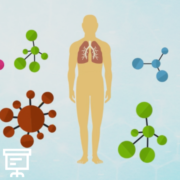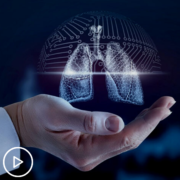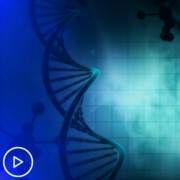When it comes to lung cancer, you would be hard-pressed to find someone who didn’t know that it is linked to smoking. If you don’t want lung cancer, you don’t smoke. It’s as simple as that. Or, is it? Smoking is the leading cause of lung cancer, but it is not the only cause. Lung cancer is not a simple disease. Lung cancer is complex and misunderstood and underfunded, and it continues to be the leading cause of cancer death. With the number of lung cancer cases on the rise among people who have never smoked, it’s about time we really get to know lung cancer.
Lung Cancer Overview
Lung cancer is the result of abnormal cells growing out of control in the lungs. It is most often caused by smoking, but it can and does occur in people who have never smoked. People of any age can get lung cancer, but it is most likely to occur in adults in their 60s and 70s. Lung cancer is most successfully treated when found early, but because lungs are large, tumors can grow in them for a long time without being detected. Lung cancer can spread and metastasize to other parts of the body, and once lung cancer has spread, it becomes harder to treat. Cancer can spread through tissue, the lymph system, and blood. If the cancer spreads through tissue it moves to nearby areas. If the cancer spreads through the lymph system and the blood, it metastasizes, forming a tumor (metastatic tumor) in another part of the body. The metastatic tumor is the same type of cancer as the original tumor. So if lung cancer spreads to the liver, it is still lung cancer, not liver cancer, and needs to be treated as such.
There are two main types of lung cancer: small cell and non-small cell. They are defined by the size of the cells when viewed under a microscope. The two types grow differently and are treated differently. Non-small cell lung cancer is the most common lung cancer, making up 85 percent of lung cancers. Small cell lung cancer makes up the other 15 percent, and it grows quickly. Usually by the time it is diagnosed, it has already spread to other areas of the body.
Non-Small Cell Lung Cancer
There are several types of non-small cell lung cancer, but the three that are most common are adenocarcinoma, squamous cell carcinoma, and large cell carcinoma. The most common in the United States is adenocarcinoma. This cancer starts in the cells that line the part of the lung called the alveoli. The alveoli are very small air sacs that are at the end of the respiratory system, where oxygen and carbon dioxide are exchanged in the bloodstream. The alveoli are balloon-shaped and are in clusters throughout the lungs. There are millions of them in the lungs. Squamous cell carcinoma (also called epidermoid carcinoma) makes up about 25 percent of all lung cancers. It forms in the thin, flat cells that line the inside of the lungs. Large cell carcinoma makes up about 10 percent of lung cancer cases, and it can form in any large cells in the lungs.
The less common types of non-small cell lung cancer are: pleomorphic, which is a rare malignant tumor; carcinoid tumor, a slow growing tumor usually found in the gastrointestinal system, but sometimes found in the lungs; salivary gland carcinoma, a rare cancer that forms in the salivary glands, mostly in older people; and unclassified carcinoma, a tumor that can’t be specified because of an insufficient sample or some other reason.
Non-small cell lung cancer has several stages. The stages are determined by the size of the tumor and whether or not the tumor has spread. Non-small cell lung cancer can also come back after it’s been treated. It can come back in the lungs, but can also recur in other parts of the body. The five-year survival rate for people with non-small cell lung cancer is usually between 11 and 17 percent.
Small Cell Lung Cancer
The two types of small cell lung cancers are small cell carcinoma, called oat cell cancer, and combined small cell carcinoma. Small cell lung cancers usually grow quickly and are very likely to spread, most often to the liver, brain, bones, and adrenal glands. After diagnosis, most people live for up to one year. Less than seven percent survive five years.
Lung Cancer Risk Factors
Risk factors are things that increase your chances of getting cancer. Some risk factors are things you can control and others are not, but it is important to know your risk so you can help prevent the occurrence of cancer or know if you should be screened. The risk factors for lung cancer are:
Smoking
Most, but not all, cases of lung cancer are caused by cigarette smoking. It is the number one risk factor and when combined with other risk factors, it tends to magnify the risk. Using other tobacco products, such as cigars and pipes, also increases your risk. People who smoke tobacco products are about 15 to 30 times more likely to get lung cancer. Smoking occasionally or a few cigarettes a day also increases the risk. The risk increases the more years you smoke and the more cigarettes smoked each day. Using low-tar or low-nicotine cigarettes does not decrease the risk of lung cancer, but quitting smoking does. People who have quit smoking have a lower risk than if they had continued to smoke, but they still have an increased risk over those who never smoke.
Secondhand Smoke
Secondhand smoke can be just as dangerous as smoking when it comes to lung cancer risk. When you breathe secondhand smoke into your lungs it is just like you are smoking. While the doses are smaller, you are exposed to the same cancer-causing toxins as if you were smoking.
Radon Gas and Other Substances
Radon is a radioactive, naturally-occurring, colorless, odorless and tasteless gas that causes approximately 20,000 cases of lung cancer each year. Radon often gets trapped in houses and can build up over time. There are other substances, often found in workplaces, that when exposed to them, also put people at risk for lung cancer, including asbestos, arsenic, diesel exhaust, tar and soot, nickel, beryllium, cadmium, and some silicas and chromiums. While these substances can cause lung cancer in those who have never smoked, the risk of lung cancer is higher for people who smoke in addition to being exposed to the substances. Exposure to radiation after an atomic bomb explosion also increases lung cancer risk.
Personal or Family History
People who have a personal or family history of lung cancer are at increased risk. If you have already had lung cancer you are at risk of developing another lung cancer. If you have a close family member with lung cancer, your risk of getting lung cancer is also increased, but that is largely because smoking tends to run in families. Even if you don’t smoke, but live in a home with a smoker, your risk is increased due to secondhand smoke exposure. There is also growing research that shows that genetics could play a role through inherited gene mutations (more about that later).
Radiation Therapy
Patients who have had radiation therapy in their chest to treat certain cancers, such as breast cancer and Hodgkin’s lymphoma, are at higher risk for lung cancer: the higher the dose, the higher the risk. Patients who have received radiation therapy, and who also smoke, have a higher risk than non-smokers. Imaging tests, such as CT scans, also expose patients to radiation and can increase lung cancer risk.
Air Pollution
People who live in areas with higher levels of air pollution have a higher risk of lung cancer. The quality of the air you breathe matters.
Diet
There is not a lot known about how diet affects lung cancer risk, but scientists do know that smokers who take beta-carotene supplements have an increased risk of cancer. Also, people exposed to arsenic in drinking water, often from private wells, have an increased risk of cancer.
HIV
People who have the human immunodeficiency virus (HIV) may have twice the risk of lung cancer than those without HIV. However, because people with HIV have higher smoking rates than people without HIV, it is hard to know whether the increased risk is from the HIV infection or the cigarette exposure.
Preventing Lung Cancer
It is possible to reduce your risk of lung cancer through prevention because so many of the risk factors for lung cancer are environmental or lifestyle-related. The best ways to reduce your lung cancer risk are:
No Smoking
Not smoking is the number one way to prevent lung cancer. People who already smoke can lower their risk by quitting smoking, and smokers who have been treated for lung cancer can reduce their risk of another lung cancer by quitting smoking. The amount your risk lowers when you quit smoking depends on how long and how much you smoked, and the number of years since you quit. The risk of lung cancer decreases 30 to 60 percent after someone has quit for ten years. However, the risk will never be as low as if you had never smoked in the first place.
Reduce Environmental and Workplace Exposure
Laws that help protect workers from exposure to lung cancer causing substances in the workplace can help reduce the risk of lung cancer. In addition, laws that prevent secondhand smoke help lower lung cancer risk. Reducing exposure to radon gas can also reduce the risk of lung cancer. Reducing radon in homes can be done by taking such measures as sealing basements.
There are other means of possibly preventing lung cancer, though there is no clear evidence that they will specifically decrease the occurrence of lung cancer. They include:
Diet
There are studies that show that people who eat large amounts of fruits and vegetables are less likely to get lung cancer than people who eat small quantities. However, studies also show that people who are inclined to eat a lot of fruits and vegetables are less likely to smoke, so it is not known whether the reduced cancer risk is from eating fruits and vegetables or from not smoking.
Physical Activity
The same is true with physical activity. Studies show that more physically active people are less likely to get lung cancer. However, non-smokers tend to be more physically active than smokers, so it’s hard to tell whether the cancer risk is from the physical activity or from not smoking.
The Role of Genetics
Aside from the environmental risk factors, how can we account for the roughly 20 percent of people who die from lung cancer who are never smokers? Lung cancer in never smokers is on the rise in both the United States and Europe so researchers have started looking more closely at a genetic link to lung cancer. It’s estimated that about eight percent of lung cancers are hereditary. You can’t inherit cancer, but you can inherit a likelihood to get cancer based on the make up of your genes. Most lung cancers occur because of gene mutations that happen during a person’s lifetime, like when they are exposed to carcinogens, such as tobacco smoke or radiation. These are called somatic, and they can’t be passed down through families. However, there are hereditary mutations passed down through families called germline, and having these can increase your risk of getting cancer. Scientists have begun to identify the link between some of the mutations and lung cancer. There is a lot more to learn about the role of genetics in lung cancer, but researchers do know that young women never smokers are the most likely to have lung cancer caused by a genetic predisposition. They also know that people that get cancer as a result of a hereditary mutation are more likely to get non-small cell lung cancer.
Lung Cancer Screening
The best chances of treating many cancers come from early diagnosis and treatment. That is why it is important for people with the highest risk factors to be screened before they have symptoms. People who should be screened for lung cancer are between 55 and 80 years old, currently smoke or quit within the last 15 years, and have a 30 pack year history of smoking. A 30 pack year history means they smoked one pack a day for 30 years or two packs a day for 15 years. Often, by the time someone has lung cancer symptoms, the cancer has already spread. There are three types of screening tests for lung cancer: the low-dose spiral CT scan (LDCT), also called a low-dose helical CT scan, chest X-ray and, sputum cytology, which examines the mucus from the lungs.
Of the three screenings, only the LDCT has shown in a trial that it can decrease the risk of dying from lung cancer. The trial studied heavy smokers, aged 55-74 years, who had smoked at least one pack of cigarettes per day for 30 years or more, and heavy smokers who had quit smoking within the past 15 years. The study found that LDCT screenings were better than chest x-rays at detecting lung cancer in the early stages. The study also showed that LDCT screenings reduced the risk of dying from lung cancer. The study did not find that chest x-ray and sputum cytology screenings decreased the risk of dying from lung cancer.
While screenings can save lives, there are some risks. It is important to remember that there is no guarantee that finding lung cancer will improve your health or help you live longer. Also, the tests can be wrong. Sometimes cancer that is there won’t be detected; other times screenings can lead to a false alarm that could result in an unnecessary, invasive procedure. Or, screenings can lead to overdiagnosis, which means that cancer cells that may never cause harm to your body and don’t require treatment, get detected. The LDCT scans also expose the patient to radiation. The risks of screening should be considered and discussed with your doctor. Hopefully, in the future there will be better screening methods for lung cancer. There are researchers looking into more effective, less invasive, and less expensive screenings, such as breath and saliva analysis.
Signs and Symptoms
Lung cancer does not always have symptoms and when it does, the symptoms are often very general and similar to things like a respiratory infection, that don’t seem serious. Often, by the time someone has gone to the doctor the cancer has already spread. When this happens, other symptoms beyond what are listed here could be present. However, any symptoms should be checked with your doctor. Lung cancer symptoms include:
- A cough that doesn’t go away or worsens
- Chest pain, discomfort
- Frequent chest infections, such as bronchitis or pneumonia
- Unexplained headaches
- Trouble breathing
- Wheezing
- Hoarseness
- Loss of appetite
- Unexplained weight loss
- Feeling very tired
- Trouble swallowing
- Swelling in the face or the veins in the neck
- Bone pain
- Coughing up blood
Lung Cancer Diagnosis
There are several test options used to diagnose lung cancer. Tests can include a physical exam and patient history, lab tests, chest x-ray, CT scan, examination of mucus from the lungs, and thoracentesis, which involves checking for cancer in fluid removed from the lungs.
After initial testing, if cancer is suspected, a biopsy is done. There are several possible types of biopsy, and each individual case will determine which type of biopsy is necessary. The biopsies range in level of invasiveness from insertion of a needle or a scope to surgical procedures and lymph node removal. There are also lab tests used to test for lung cancer. Some lab tests check sample tissue, blood, or body fluids for indications of cancer while others look for cancer markers, called antigens. The markers can sometimes help determine the type of cancer.
Staging Lung Cancer
When lung cancer is diagnosed, then the stage of cancer is determined. The stage is the size of the tumor, and whether the cancer has spread within the lung or in other parts of the body. Sometimes the staging is done during diagnosis, but if not, other tests are used to identify what stage the cancer is in, which helps determine a treatment method.
Stages of Non-Small Cell Lung Cancer
Non-small cell lung cancer staging is very complex, and many of the stages have several subgroups with specific conditions based on the size of the tumor, whether or not the cancer has spread to the lymph nodes, whether the cancer has spread to the opposite side of the chest from the original tumor, whether or not there are additional tumors, and whether or not the cancer has spread to other parts of the body. A very simplified version of non-small cell lung cancer staging looks like this:
Stage I: The cancer has not spread to the lymph nodes.
Stage II: The cancer has spread to nearby lymph nodes.
Stage III: The cancer has spread to the lymph nodes and other parts of the surrounding area.
Stage IV: The cancer has spread to other parts of the body.
Stages of Small Cell Lung Cancer
Small cell lung cancer has two stages:
Limited Stage Small Cell Lung Cancer: The cancer is in the lung but may have spread to the area between the lungs or to the lymph nodes above the collarbone.
Extensive-Stage Small Cell Lung Cancer: – The cancer has spread beyond the lungs to other areas of the body.
Treatment
As with other cancers, lung cancer is often treated with a combination of procedures. There are ten types of standard treatment for non-small cell lung cancer. They include surgery, radiation therapy, chemotherapy, targeted therapy, immunotherapy, laser therapy, photodynamic therapy (PDT), cryosurgery, electrocautery, and watchful waiting. Small-cell lung cancer is treated with
surgery, chemotherapy, radiation therapy, immunotherapy, laser therapy and endoscopic stent placement. Several different treatment options may be used depending on the type and stage of the cancer. There are four types of surgery used to treat lung cancer. They range from removing a small section of the lung lobe to removing one whole lung. There are, of course, risks and side effects to treatment options that patients should discuss with their doctors, and patients should also be aware of the latest treatment options available. Researchers are always looking for new, more effective treatment options through things like studies and clinical trials.
Clinical Trials
If you are diagnosed with lung cancer, you might want to consider participating in a clinical trial. There are trials available all over the country. Clinical trials help determine whether new treatments may be better than the standard treatments. The trials help to advance the treatment of cancer. Each clinical trial will have its own requirements. There are usually trials available to patients in any stage of treatment. Information about available trials can be found on the National Cancer Institute website, cancer.gov.
Recovery and Survival
The chance of recovery from lung cancer depends on several factors, including the type of cancer, the stage the cancer is in, whether the cancer has spread, whether the patient has signs or symptoms, and the patient’s overall health. However, more than half of people with lung cancer die within a year of diagnosis. This is likely because only 16 percent of lung cancers are diagnosed at an early stage. The lung cancer five-year survival rate is 18.6 percent, which is much, much lower than other cancers, such as colorectal cancer, which has a five-year survival rate of 64.5 percent. The breast and prostate cancer survival rates are even higher.
Lung Cancer Stigma
There are some that believe that lung cancer survival rates are so much lower than other cancers because of a stigma attached to the disease. When it comes to lung cancer, people tend to assume that it is a self-inflicted disease. The stigma can affect patient care and funding which could lead to advances in research. Some patients have reported feeling guilt and shame for having lung cancer, and some said that they delayed seeing their doctor about their lung cancer symptoms because of the stigma attached. Other research has shown that when patients do seek treatment, some doctors were less likely to refer the patients for further treatment if they had lung cancer rather than another cancer. Funding is also negatively affected by the stigma. Despite lung cancer killing more people than breast, prostate and colon cancers combined, federal and private funding are both way behind what other cancers receive for research. Only six percent of the federal money spent on cancer research is spent on lung cancer.
There is evidence that the lung cancer stigma is starting to change, as are the cases of lung cancer. With 60 to 65 percent of all new lung cancer cases being diagnosed in people who have never smoked or are former smokers, lung cancer can no longer be considered a simply a smoker’s disease.
Sources
“What is Lung Cancer?” Centers for Disease Control and Prevention, September 18, 2019, https://www.cdc.gov/cancer/lung/basic_info/what-is-lung-cancer.htm. Accessed February 26, 2020.
“What are the Risk Factors for Lung Cancer?” Centers for Disease Control and Prevention, September 18, 2019, https://www.cdc.gov/cancer/lung/basic_info/risk_factors.htm. Accessed February 26, 2020.
“Lung Cancer—Patient Version” National Cancer Institute, https://www.cancer.gov/types/lung. Accessed February 26, 2020.
“Patient and Physician Guide: National Lung Screening Trial (NLST)” National Cancer Institute, https://www.cancer.gov/types/lung/research/nlststudyguidepatientsphysicians.pdf. Accessed February 26, 2020.
Eldridge, Lynne. “Function and Disorders of the Alveoli: Minute Structures of the Lung Vital to Respiration” Verywell Health, https://www.verywellhealth.com/what-are-alveoli-2249043. Accessed February 26, 2020.
“Lung Cancer” HealthLinkBC, December 19, 2018, https://www.healthlinkbc.ca/health-topics/hw183816. Accessed February 26, 2020.
Nall, Rachel. “What to Know About Lung Cancer” Medical News Today, November 16, 2018, https://www.medicalnewstoday.com/articles/323701#what-is-lung-cancer. Accessed February 26, 2020.
Eldridge, Lynne. “Relation, Heredity, and Other Genetic Factors for Lung Cancer: How Family History Affects Lung Cancer Risk” Verywell Health, updated September 23, 2019, https://www.verywellhealth.com/is-lung-cancer-inherited-2248975. Accessed February 26, 2020.
Kanwal, Madiha, Ding, Xiao-Ji, Cao, Yi. “Familial Risk for Lung Cancer (Review)” Spandidos Publications, December 20, 2016, https://www.spandidos-publications.com/10.3892/ol.2016.5518. Accessed February 26, 2020.
“Lung Cancer” American Lung Association, updated September 25, 2019, https://www.lung.org/lung-health-and-diseases/lung-disease-lookup/lung-cancer/resource-library/lung-cancer-fact-sheet.html. Accessed February 26, 2020.
“Types and Staging of Lung Cancer” Cancer Care, https://www.lungcancer.org/find_information/publications/163-lung_cancer_101/268-types_and_staging. Accessed February 26, 2020.
Eldridge, Lynne. “Understanding the Stigma of Lung Cancer” Verywell Health, December 1, 2019, https://www.verywellhealth.com/the-stigma-of-lung-cancer-2249236. Accessed February 26, 2020.
Hamann, Heidi A., Ostroff, Jamie S., Marks, Emily G., Gerber, David E., Schiller, Joan H., Craddock Lee, Simon J. “Stigma Among Patients with Lung Cancer: A Patient-Reported Measurement Model” National Center for Biotechnology Information, January 1, 2015, https://www.ncbi.nlm.nih.gov/pmc/articles/PMC3936675/. Accessed February 26, 2020.
PDQ® Screening and Prevention Editorial Board. PDQ Lung Cancer Prevention. Bethesda, MD: National Cancer Institute. Updated June 19, 2019. Available at: https://www.cancer.gov/types/lung/patient/lung-prevention-pdq. Accessed February 26, 2020.
PDQ® Screening and Prevention Editorial Board. PDQ Lung Cancer Screening. Bethesda, MD: National Cancer Institute. Updated May 10, 2019. Available at: https://www.cancer.gov/types/lung/patient/lung-screening-pdq. Accessed February 26, 2020.
PDQ® Adult Treatment Editorial Board. PDQ Non-Small Cell Lung Cancer Treatment. Bethesda, MD: National Cancer Institute. Updated October 16, 2019. Available at: https://www.cancer.gov/types/lung/patient/non-small-cell-lung-treatment-pdq. Accessed February 26, 2020.
PDQ® Adult Treatment Editorial Board. PDQ Small Cell Lung Cancer Treatment. Bethesda, MD: National Cancer Institute. Updated October 16, 2019. Available at: https://www.cancer.gov/types/lung/patient/small-cell-lung-treatment-pdq. Accessed February 26, 2020.



















